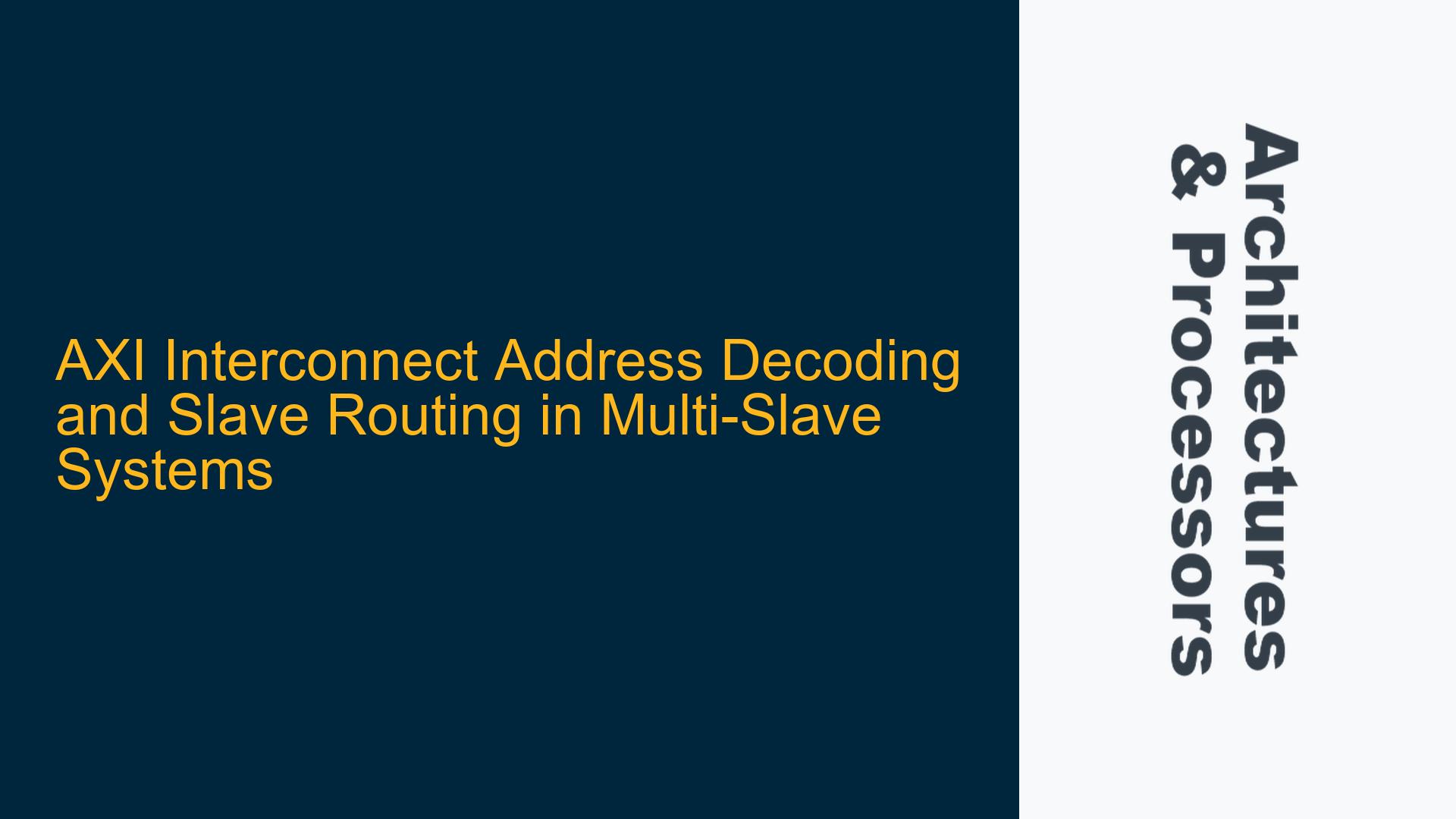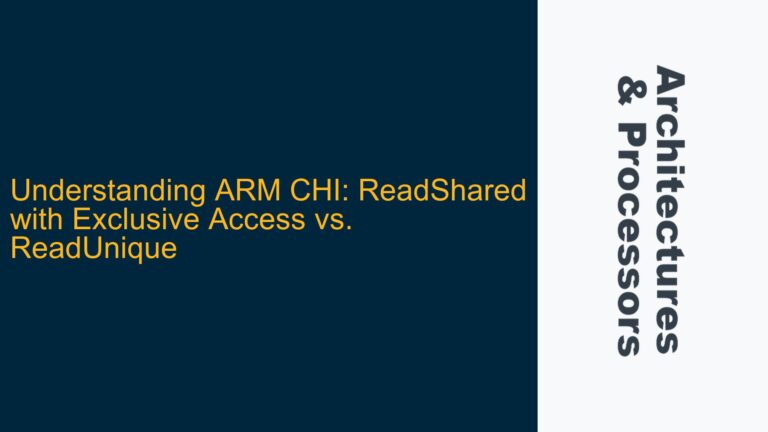AXI Interconnect Address Decoding Mechanism for Slave Routing
In a multi-slave AXI (Advanced eXtensible Interface) system, the routing of packets from a master to the correct slave is a critical function of the AXI interconnect. The AXI interconnect relies on address decoding to determine which slave device is being addressed by a transaction. Each slave in the system is assigned a unique, non-overlapping address range, and the interconnect uses this address mapping to route transactions to the appropriate slave.
The address decoding process begins when a master initiates a transaction by sending a request packet to the interconnect. This request packet includes an address field that specifies the target location for the transaction. The interconnect’s decode logic examines this address field and compares it against the predefined address ranges assigned to each slave. Once the correct slave is identified, the interconnect routes the transaction to that slave.
The address ranges assigned to slaves are typically defined during the system design phase and are configured in the interconnect’s address decode logic. These ranges must be non-overlapping to ensure that each transaction is routed to only one slave. If overlapping address ranges were allowed, the interconnect would be unable to determine the correct slave for a given transaction, leading to potential data corruption or system failures.
Even when third-party slaves are integrated into the system, the interconnect’s address decode logic remains responsible for routing transactions. The interconnect’s configuration ensures that only the assigned address ranges are accessible to each slave, regardless of the slave’s native address range capabilities. For example, a third-party slave with a 4GB address range might be connected to the interconnect, but if the interconnect only maps a 4KB address range to that slave, only transactions within that 4KB range will be routed to the slave.
Potential Issues with Third-Party Slaves and Address Range Allocation
While the address decoding mechanism in AXI interconnects is robust, there are potential issues that can arise, particularly when integrating third-party slaves into the system. One common issue is address range conflicts, where the address ranges assigned to different slaves overlap or are incorrectly configured. This can occur if the system designer fails to properly allocate non-overlapping address ranges during the design phase.
Another issue is the mismatch between the native address range of a third-party slave and the address range assigned by the interconnect. For example, a third-party slave might support a large address range, but the interconnect might only map a small portion of that range. If the master attempts to access an address outside the mapped range, the transaction will not be routed to the slave, leading to access errors or undefined behavior.
Additionally, the performance of the interconnect can be impacted by the complexity of the address decode logic. In systems with a large number of slaves or complex address mappings, the decode logic must process a significant amount of information to determine the correct slave for each transaction. This can introduce latency and reduce the overall performance of the system.
Configuring Address Decode Logic and Resolving Address Range Conflicts
To ensure proper routing of transactions in a multi-slave AXI system, it is essential to carefully configure the address decode logic and resolve any address range conflicts. The following steps outline the process for configuring the interconnect and troubleshooting common issues:
-
Define Non-Overlapping Address Ranges for Each Slave: During the system design phase, assign unique, non-overlapping address ranges to each slave. Ensure that these ranges are documented and communicated to all stakeholders involved in the design and implementation of the system.
-
Verify Address Range Configuration in the Interconnect: After configuring the address decode logic, verify that the address ranges assigned to each slave are correctly implemented in the interconnect. This can be done by simulating the system and testing transactions to each slave.
-
Check for Address Range Conflicts: Use tools and scripts to analyze the address ranges assigned to each slave and identify any potential conflicts. If conflicts are found, adjust the address ranges and reconfigure the interconnect.
-
Validate Third-Party Slave Integration: When integrating third-party slaves, ensure that the address ranges assigned by the interconnect match the expected address ranges of the slaves. Test the system to confirm that transactions are correctly routed to the third-party slaves.
-
Optimize Address Decode Logic for Performance: In systems with complex address mappings, consider optimizing the address decode logic to reduce latency. This might involve simplifying the address ranges or using hierarchical decoding techniques.
-
Monitor System Performance and Debug Issues: After deploying the system, continuously monitor its performance and debug any issues related to address decoding. Use diagnostic tools to trace transactions and identify any misrouted packets.
By following these steps, system designers can ensure that the AXI interconnect correctly routes transactions to the appropriate slaves, even in complex multi-slave systems with third-party components. Proper configuration and troubleshooting of the address decode logic are essential for maintaining system reliability and performance.






